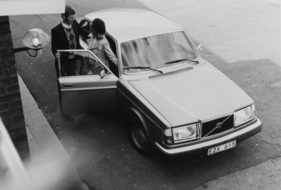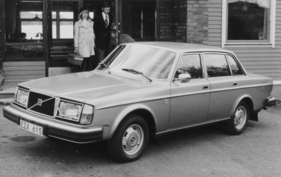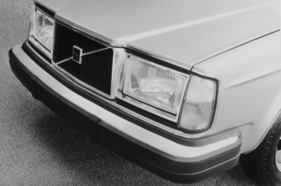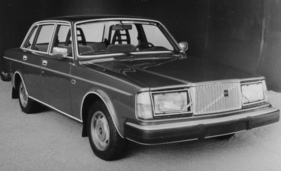Viking - Volvo 264 DL/GL in (historical) test
Summary
Compared to the Volvo four-cylinder model 244, the 264 could be given more power with a six-cylinder engine developed in collaboration with Renault-Peugeot. As usual, it was available as a DL with standard equipment or as a GL with luxury equipment, the two versions differing externally by the grille front. This test report from 1975 explains whether it was worth buying the new model.
This article contains the following chapters
- Plus points
- Minus points
- Maneuverability
- Comfort inside
- The V6
- Technical data & measured values
Estimated reading time: 9min
Preview (beginning of the article)
Our test of the new Volvo four-cylinder models 244 DL/GL with 97/123 hp appeared in mot 23/74. Now it's the turn of the V-six-cylinder 264 DL and GL, which has now gone on sale in Germany. Brief characteristics: 2.7 liter/140 hp, four-door body like the 244, but with an imposing grille front between large rectangular headlights, power steering as standard. DL: standard equipment, four gears, base price DM 20,850. GL: Luxury equipment, five gears, base price DM 24,840 with steel crank roof as standard. Both are optionally available with automatic transmission for an additional DM 950. Safety is the most important Volvo slogan: the occupant cell with its energy-absorbing support frame and crumple zone luggage compartment, under which two strong arms of the floor frame lead to the impact absorbers in which the rear bumper is mounted, remained unchanged. At the front, the support frame for the suspension struts (previously double wishbones) and the front impact absorbers have been redesigned. Inner sheet metal parts have an energy-dissipating effect, while the outer sheet metal is designed to give way - you should not be disappointed if, for example, the sheet metal on the front wheel arches gives way under hand pressure. The wheels have been reduced in size from 15 to 14 inches, the track is significantly wider, especially at the rear, the bearings of the rear trailing arms have been moved apart and a rear anti-roll bar has been added. Wider tires (175 instead of 165, on the GL: 185/70) result in better road holding and more balanced suspension characteristics. No special tire recommendation necessary; with 185/70 Kléber (also on the GL test car) is considered particularly favorable, although it is not quiet when running.
Continue reading this article for free?
Photos of this article











































































